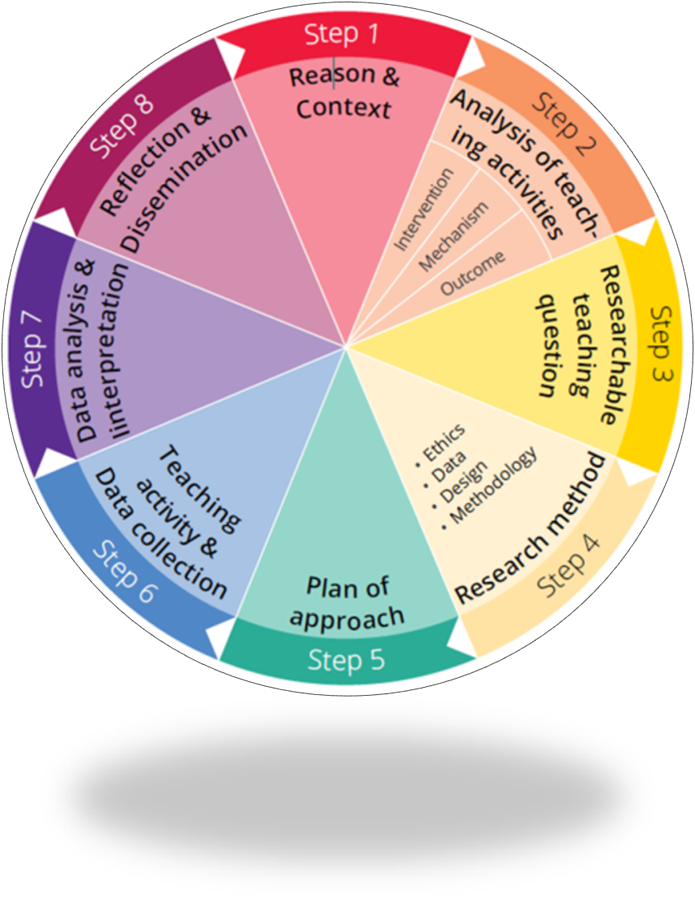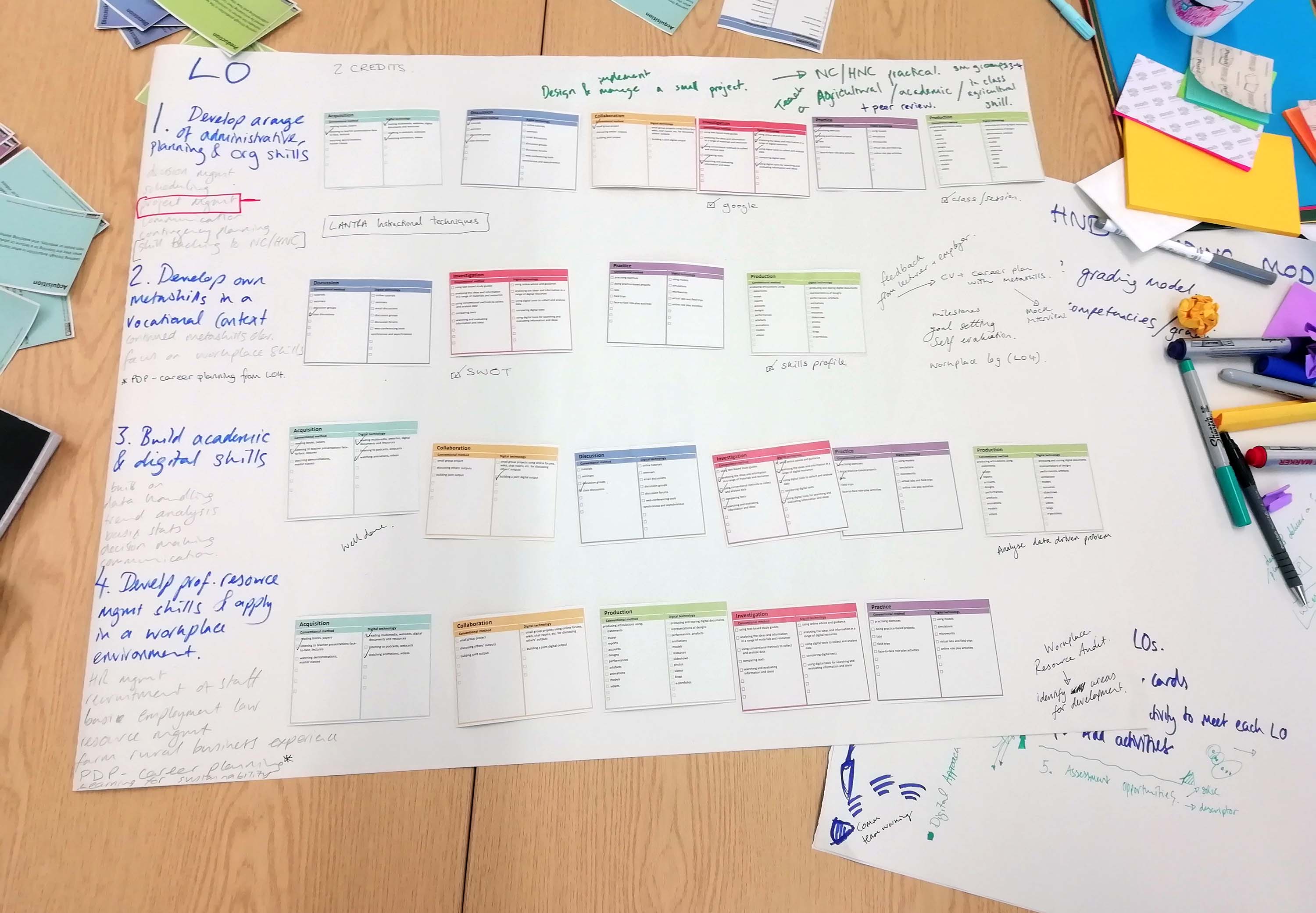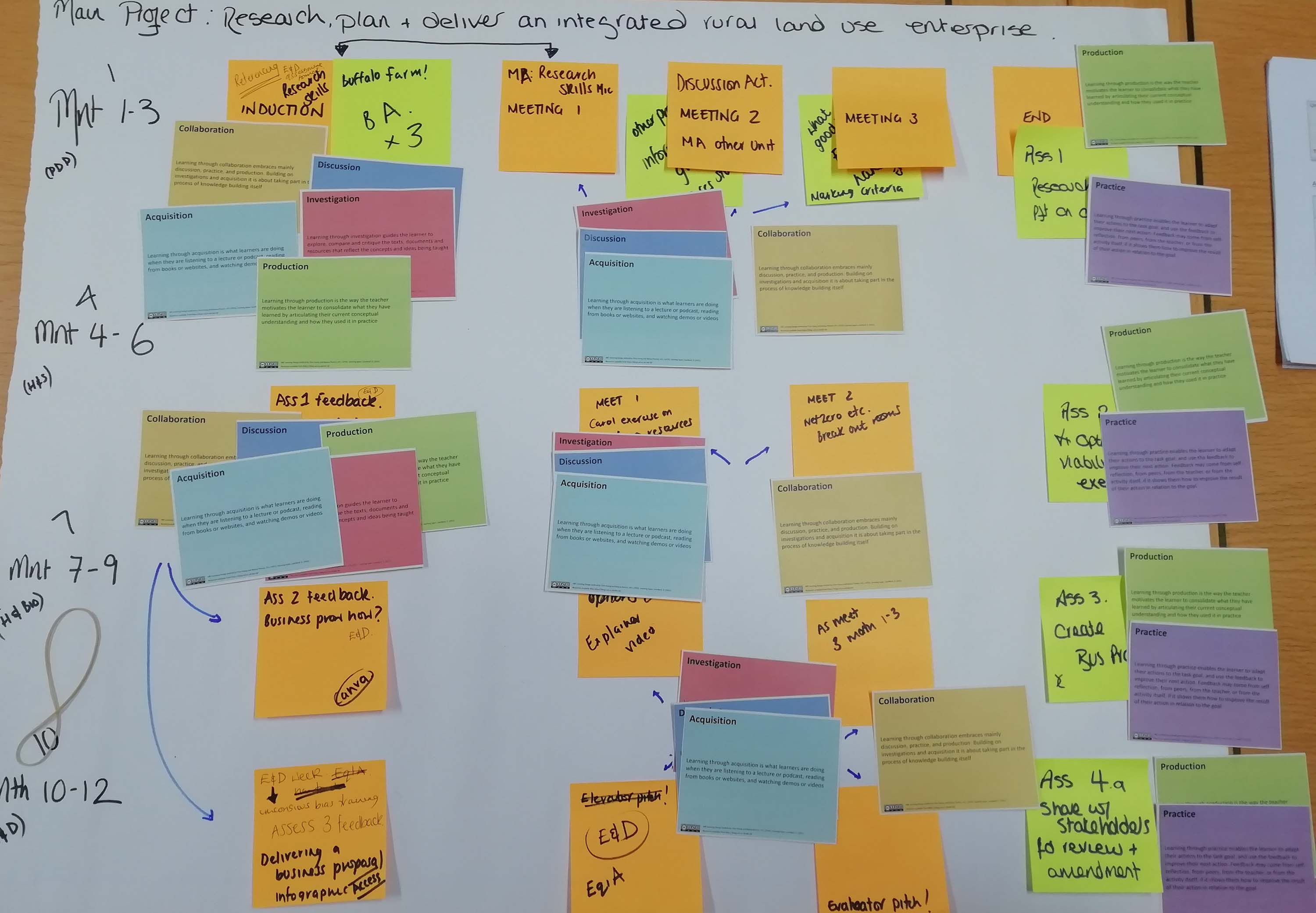This section introduces various approaches, tools, frameworks and models to inform the conscious planning and design of active blended learning. It includes an overview of the ABC Learning Design Framework and proposes three other well-known models: Carpe Diem, Community of Inquiry Framework, and the Universal Design for Learning Framework, which could augment this approach. Finally, evaluation is addressed.
3.1 Preparing for active blended learning
For institutions and educators planning for blended learning delivery, there will be challenges and obstacles to overcome - this is the case for any innovation or change. As stated in Section 1, our learners are becoming more discerning, and less tolerant of poor educational offerings. Careful planning can minimise disruption and improve the experience for both learners and educators.
Jisc (2020) provides a short blended learning action plan as part of its guide: Reimagining blended learning in higher education. It reminds institution leaders to consider:
- how active blended learning fits (or changes) with overall institutional strategy around learning and teaching quality
- how you anticipate your institutional blended learning approach will develop over time
- the additional skills (pedagogic and technical) needed by educators and students, and how you will manage and communicate any changed expectations
- any additional technological requirements
- any governance issues such as GDPR
- how you will ensure inclusion and accessibility.
Developing a clear picture of how blended learning sits within institution strategy and practice will be invaluable in helping to monitor and evaluate its efficacy.
3.2 Designing active blended learning
Whether adoption of active blended learning is an institutional or local initiative, the design process itself is a key milestone in the process. This is the point at which the vision of the course team, and the needs and aspirations of learners and other stakeholders, are captured. This is when you need to make key decisions around the learning content, pedagogy, the blend of online and face-to-face learning, and and how you ensure that the learning is active.
- Do you need to understand your learners' needs and aspirations? Can you consult them, or better still involve them in the design process?
- Do you need technical advice to ensure what you want to do can be supported?
- Do you need input from anyone else beyond the course team - for example, learning technologists, librarians, employers?
Once you have committed to deliver a learning experience that provides the benefits of active blended learning, your next step is to design that learning experience. Several theoretical frameworks and models are available to guide planning active blended learning. It is essential that there is a purposeful and effective mix of face-to-face and online activities, based upon active learning. Using a formal framework is important in capturing a shared understanding of how the learning experience you are designing will work in practice. Formally designing the course is also important for resource allocation and helps you to define what you set out to do such that you can subsequently evaluate whether you achieved your goals.
The ABC Learning Design Framework is used to support blended learning design. Clive Young and Nataša Perović developed this method at University College London, building upon Diana Laurillard’s Conversational Theory of Learning.
Laurillard proposes that learning occurs through interactions that take place between learners and educators, as well as between learners and their peers. The framework recognises six learning activities, typifying the range of interactions during learning:
- Acquisition - listening to a teacher or podcast, or watching a video or demonstration.
- Inquiry - going to the library to find out something; demand that the learner formulates a question more under control of the learner.
- Discussion - where the learner is provided with opportunities to ask questions of other learners, and responding to others. In this way they are driven to develop and articulate their ideas, and take on alternate viewpoints.
- Practice - a learning environment with a task goal, where the learner tries to achieve that goal, perhaps refining their practice/behaviour over time to reach the standard.
- Collaboration - this could be a shared project, where learners have a shared goal to produce a shared output, requiring them to negotiate and challenge each other and demanding that they drive learning by providing peer feedback to each other.
- Production - when learners produce something for the teacher to evaluate.
For additional information on Laurillard’s work, watch this video on conversational learning, and the six learning types.
The framework design process supports course teams in coming together (face-to-face or online, mediated by a tool such as Padlet) to design learning experiences collaboratively. Laurillard’s six learning types provide a simple common vocabulary through which teams can outline the learning design, considering the best blend, mode and sequence of activities. It is technologically neutral, so, for example, a discussion could take place face-to-face in a classroom, via WhatsApp or in the discussion forum of a virtual learning environment such as BlackBoard or Canvas.
Sessions are organised as 'sprints' within the framework to be completed within 90 minutes. The output is a visual record that clearly shows the design decisions - our examples of good practice are provided below.
Case study: Advancing active and blended learning at Scotland's Rural College (SRUC)
This case study from Pauline Hanesworth at SRUC describes their use of the ABC Learning Design Framework in detail, highlighting how it fulfils a strategic commitment to active and blended learning articulated in their Learning and Teaching Enhancement Strategy. The case study describes how using the framework facilitates discussion of course content and uncovered an over-reliance on ‘acquisition’ that facilitated further re-design.
Additional resources on ABC Learning Design
- The ABC Learning Design website contains a wealth of information, resources, examples and support to help course teams implement this effectively.
- CDN's Delivering Curriculum Online resource provides a brief introduction to this framework and links to accompanying supporting videos
- Colin Milligan discusses how Glasgow Caledonian University uses the framework in the design and implementation of blended learning. Their use of ABC Learning Design during the COVID pandemic is described in: Providing Continuous Learning and Professional Development Through a Toolkit Design.
In addition to thinking about the blend, balance and sequencing of learning activities, the course team may want to use other frameworks to inform the design of active blended learning. Perhaps you have previous experience of a different framework, or you want your design to address a particular aspect of your learners’ experience. The ABC Learning Design Framework's simplicity means it is easy to combine elements (for example, the Learning Types) with other frameworks or to layer another framework on top. There are three additional well-known frameworks which may be of interest:
- Carpe Diem
- Community of Inquiry Framework
- The Universal Design for Learning Framework
This resource explains these Frameworks in more detail.
3.3 Deploying new blended learning experiences
As with any change, careful introduction and deployment is vital to success. As well as changed learning materials, the new learning content will likely demand new, or adapted, online and classroom behaviours. Your learners will need additional skills or support to navigate new resources or use new learning environment features, as discussed in Section 4. If possible, pilot your new learning content with more experienced students. Feedback may help you avoid 'teething problems' or suggest slight improvements. Take time to collaborate with your learners in the design stages.
Make the opportunity to introduce and explain the rationale behind your design to your students - for example, explain why some of it is online and other elements are face-to-face. Highlight that active participation, as noted in Section 1, is required to get the most out of the learning experience. If necessary, explain aspects of your design, such as group work, that they may be unfamiliar with. Highlight the benefits for them, for example, flexibility, accessibility, bringing their perspective, opportunities to revisit and revise content, choose their path through the materials. All of this will increase your learners’ engagement with the content.
Evaluating blended learning in action
When deploying new learning designs, it is important to evaluate the effectiveness of the new designs you create. As an educator, or someone who supports learning, you should be able to articulate what you were aiming to do in designing/redesigning the learning content (and depending on the process, you may have articulated these aspirations prior to embarking on your design). These aspirations can then be used as the basis for formal or informal evaluation: did our design meet these aims? For this, you should think about what evidence of success (or otherwise) might look like. You could ask your students/learners what they think of the learning experience or ask other members of the course team to provide feedback. You could look for improved exam results or increased retention as evidence of the value your (re)design has added. You should also reflect yourself on how the new materials are being used: are they supporting learning in the way you anticipated? Is there anything I could have done better, or need to fix?
QAA Scotland has extensive evaluation resources developed by Professor Stella Jones-Devitt from Staffordshire University and Professor Liz Austen from Sheffield Hallam University, which can be used to support monitoring and evaluation of new active blended learning initiatives.
Depending on your own plans, then collecting data as a systematic research investigation of your teaching and learning practice may be possible. A well-designed action research study can be helpful in improving your own practice and providing opportunities for iterative improvement of the learning you deliver. For more on this, look at the Scholarship of Teaching and Learning Roadmap developed by Irma Meijerman, Lindy Wijsman and Femke Kirschner at the University of Utrecht.

Fundamental Principles of Scholarship of Teaching and Learning Utrecht Roadmap
Additional resources
Guides for blended learning
- Jisc (2020) offer a practical, introductory guide to blended learning: Reimagining blended learning in higher education with helpful hints and tips when starting to prepare for blended learning.
- College Development Network has a practical guide exploring how accessible materials can be developed for blended learning including videos.
- Cleveland-Innes and Wilton (2018) provide an overview of synchronous and asynchronous learning activities for blended learning, guiding us through how we can integrate them.
ABC Learning Design
- ABC Learning Design - Sprint design your courses and programs in just 90 minutes (abc-ld.org)
- Biggs, J B (2003) Teaching for Quality Learning at University. Buckingham: Open University Press/Society for Research into Higher Education (2nd Edition)
- Hanesworth, P. (2024) Advancing Active and Blended Learning at SRUC
- Providing Continuous Learning and Professional Development Through a Toolkit Design - Houston, S, Milligan, C, Nimmo, A, and Robertson, A (2022). In Forbes, D and Walker, R (eds) Developing Online teaching in Higher Education, professional and Practice based learning 29.
Evaluation, action research and scholarship
- Jones-Devitt, S, and Austen, L (2024) A guide to basic Evaluation in Higher Education
- Meijerman, I, Wijsman, L, and Kirschner, F (2024). Adding a scholarly analysis of teaching and learning to SoTL: the development of the hands-on Utrecht Roadmap for SoTL. International Journal for Academic Development, 1–15.

